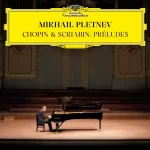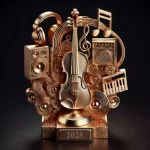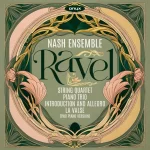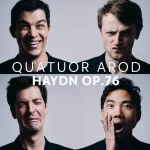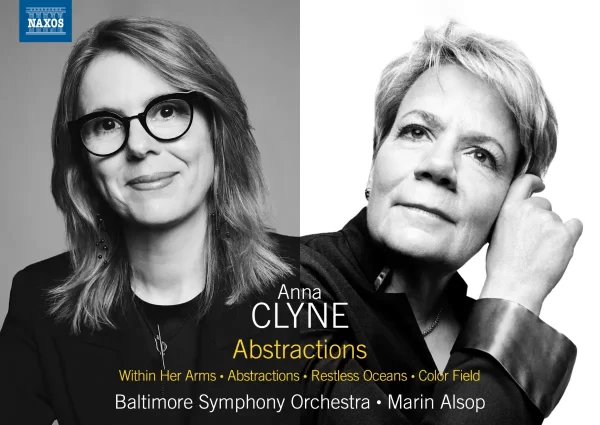Both Daniil Trifonov and Sergei Babayan have major solo Rachmaninoff efforts in their catalog, reviewed in these pages: for Daniil Trifonov, there are the four piano concertos with Yannick Nexet-Séguin (2018-2019) and for Sergei Babayan, it’s his selection of the Préludes, Études, and Moments-Musicaux. With all three albums receiving quite positive reviews , I looked forward to what the artists would bring in their collaboration, a recital that features works like the Suite No.2 and Op. 45 Symphonic Dances, but also Trifonov’s own transcription of the Adagio from Symphony No. 2.

Check “Rachmaninoff for Two” on Amazon.
The Adagio is what starts the program off; while It’s usually best to hold off general opinions to the end, this is an instance in where one can make an exception: the transcription itself is excellent, but the performance elevates it to another level. This might be one of the composer’s most gorgeous pieces of writing, and the duo creates a listening experience that is immediately captivating and immersive. The performer’s balance is impeccable, admirably captured by the sound engineers. This allows the resonant yet supple melody to shine through, further enhanced by the artist’s finely managed finger legato.
Meanwhile, the undulating accompanimental textures are just a shade above a whisper, yet still have perceptible sensitivity and fluidity. Of course, even too much of soothing melodious playing can become a drawback in a slow movement like this, but the performers steer clear of such stagnation in the more animated moments. The middle section is where we experience the full power of two pianos, as well as the dimensionality that emerges when the highest registers are juxtaposed with the lowest, deepest ones. Throughout this interpretation, I found myself swept into the music’s romanticism that is emotively yet still intelligently interpreted.
The Introduction of Suite No. 2. (track 2) brings excitement front and center, with crispness of octave and chordal runs. If we think of the technical difficulty of a work like Stravinsky’s Trois Mouvements de Petrouchka which utilizes similar textures, then the bold virtuosity here is to be admired. The Waltz (track 3) sets the ears abuzz with meticulous synchronicity, but not at the cost of artistry. Moments like 0’36” bring out Rachmaninoff’s trademark—the quintessentially lyrical, sweeping lines—before bringing a fresh surge of energy moments later.
In both this and the following Romance (track 4), the second piano gets its due with melodic material. It is in these ‘three-hand’ sections that the middle voice takes on a character of its own: a calm yet resonant presence that’s altogether different from the soprano line’s glittering and often glamorous profile.
The Symphonic Dances are not to be missed as a signature work, but the duo-piano version and this performance in particular seems to amplify some of the elements of the orchestral original. For instance, the opening of the Non Allegro (track 10) quickly intensifies from a series of mere staccatos to full and unabashed chords. With a larger string ensemble, the accents end up sounding more cushioned, but we get a pointed attack from the pianos—and the ferocity here is definitely a good thing.
The opening section has a commanding ruggedness that sets up a striking contrast to what arrives at around the 3-minute mark: ethereal and enigmatic tolling of bells that the pianists capture in breathtaking fashion. The Andante (track 11) is altogether a very different waltz from one we heard in Suite No. 2: the pianists evoke the interesting palette of sentiments as they come, from the declamatory yet harmonically unnerving beginning to the eccentric dance itself and then to the quiet moments, which are steeped in a mysterious haze.
Oscar Alan’s liner notes weave the description of the works smoothly together through a chronological narrative, one whose helpful historical context explains some of Rachmaninoff’s different composition periods. This is a masterfully presented program that I will be listening to on repeated occasions.

Rachmaninoff on 2 Pianos – Recommended Comparisons
Ashkenazy, Previn | Emaneul Ax, Yefim Bronfman | Argerich, Freire

Check offerings of “Rachmaninoff for Two” on Amazon.
Album Details |
|
|---|---|
| Album name | Rachmaninoff for Two |
| Artist | Daniil Trifonov – Piano |
| Artist | Sergei Babayan – Piano |
| Catalogue No. | 00028948648054 |
| Amazon Link | Buy here |
| Apple Music Link | Stream here |
| Label | Deutsche Grammophon |
Included with an Apple Music subscription:
Latest Classical Music Posts
- Review: Bach – Cantatas BWV 4, 106, 131 – Ensemble Correspondances, Sébastien Daucé
- Review: Mahler – Symphony No. 7 – National Symphony Orchestra – Gianandrea Noseda
- Review: Scriabin & Chopin – 24 Preludes – Mikhail Pletnev, Piano (2025)
- Year In Review – The 10 Most Read Classical Music Reviews of 2025
- Review: Ravel – Nash Ensemble
- Review: Haydn – String Quartets Op. 76 – Quatuor Arod
Read more classical music reviews or visit The Classic Review Amazon store
Follow Us and Comment:
[wd_hustle id=”HustlePostEmbed” type=”embedded”]





